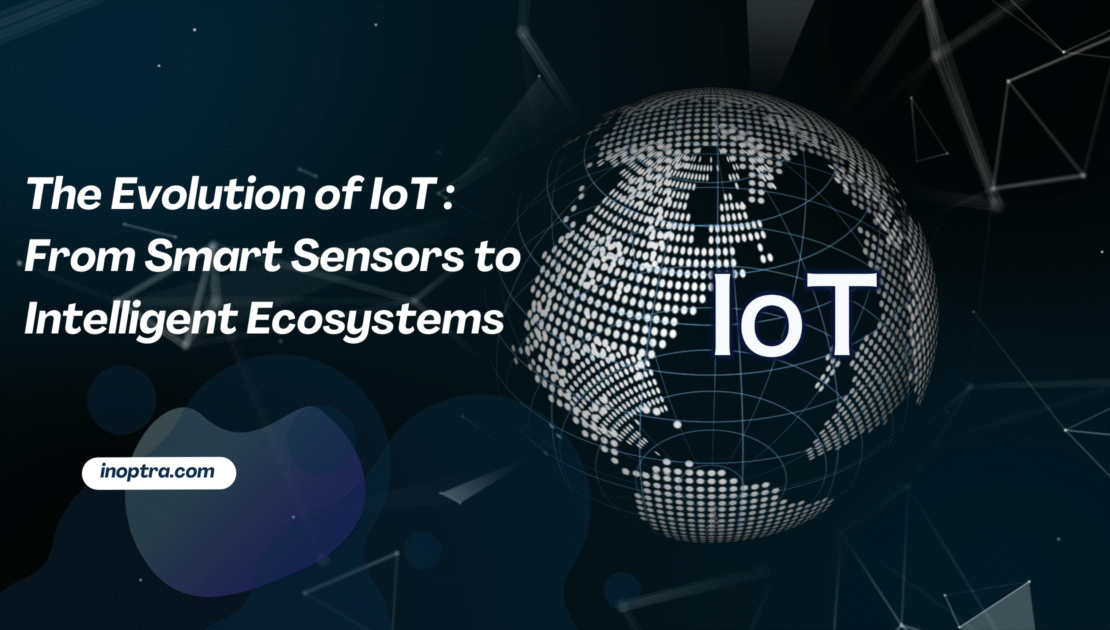What’s in the blog:
From Connectivity to Intelligence
The Internet of Things (IoT) has grown well beyond its early role of simple device connectivity. What started as basic sensor-driven data collection has evolved into a robust ecosystem powered by artificial intelligence (AI), real-time analytics, and autonomous decision-making. Today’s IoT platforms are no longer just reactive; they are predictive, adaptive, and increasingly self-managing.
This transformation is especially significant in industrial engineering and maintenance. IoT enables continuous monitoring of assets, predictive maintenance of equipment, and optimization of plant operations. By providing real-time insights into performance and wear, IoT reduces unplanned downtime, extends asset life, and drives cost efficiency—making it a cornerstone of modern industrial operations.
Beyond manufacturing, IoT is reshaping sectors from agriculture and healthcare to smart cities and energy infrastructure. Yet, the journey has not been seamless. Organizations must still address challenges of scalability, cybersecurity, and integration across complex systems.

The Era of Smart Sensors and Data Collection
IoT initially took shape through the use of sensors that tracked physical conditions such as temperature, pressure, vibration, and motion. These devices transmitted raw data to centralized systems where humans manually interpreted the information and made operational decisions. While groundbreaking at the time, such implementations were narrow in scope and heavily dependent on human oversight.
- Pain Point: The absence of interoperability and standardized protocols made scaling difficult and limited integration across different platforms and systems.
- Example: In chemical plants, pressure and flow sensors could detect anomalies in pipelines, but without advanced IoT-driven analytics, operators had to manually monitor readings and intervene—often leading to delayed responses, unplanned downtime, or safety risks.
According to a report by McKinsey, early IoT deployments delivered only 30–40% of their projected value due to fragmented architectures and limited analytics capabilities.

Connectivity and Automation Take Centre Stage
As wireless networks improved and cloud platforms became more accessible, IoT systems began to support real-time communication between devices. This enabled basic automation—devices could now respond to predefined triggers without human input.
- Pain Point: The explosion of data led to information overload, with limited tools to extract actionable insights.
- Example: Logistics companies could track shipments in real time, but lacked predictive tools to anticipate delays or optimize routes.
Platforms like AWS IoT and Azure IoT Hub helped businesses deploy scalable solutions, but most systems still relied on static rules rather than intelligent decision-making.
Intelligence Becomes the Differentiator
The integration of artificial intelligence (AI) and machine learning (ML) represented a true inflection point in the evolution of IoT. Instead of merely transmitting raw data for human review, IoT devices began to analyse information locally (edge computing) or in the cloud, continuously learning from historical patterns and real-time inputs. This intelligence allowed systems to move from reactive responses to proactive and autonomous decision-making.
This shift has fundamentally redefined IoT as not just a monitoring system, but as an intelligent decision-making ecosystem that transforms operational efficiency, safety, and sustainability.
- Pain Point: Managing and securing vast, distributed networks became increasingly complex.
- Example: In manufacturing, AI-powered sensors now predict equipment failures before they happen, reducing downtime and saving costs.
Gartner estimates that by 2027, over 50% of enterprise-managed IoT devices will incorporate AI capabilities, enabling smarter and more efficient operations.
Building Intelligent Ecosystems
Today, IoT has moved far beyond isolated, single-purpose systems. It is now about creating interconnected ecosystems where devices and platforms across diverse domains—such as energy, transportation, healthcare, manufacturing, and environmental management—work in unison to deliver optimized outcomes.
These ecosystems are no longer passive data collectors; they are context-aware, adaptive, and intelligent, capable of learning from their surroundings and adjusting in real time. By integrating AI, cloud platforms, and edge computing, IoT systems can seamlessly trigger complex, cross-domain workflows—from automatically balancing energy loads between smart grids and electric vehicles, to synchronizing hospital equipment with patient monitoring systems, or dynamically adjusting water treatment processes in response to environmental changes.
- Pain Point: Data silos and lack of unified governance hinder cross-domain collaboration.
- Example: Smart cities use integrated IoT networks to manage traffic, pollution, and energy consumption in real time.
To succeed, organizations must invest in robust infrastructure, seamless integration, and advanced analytics while addressing privacy, ethical AI, and sustainability concerns.
Persistent Challenges in IoT Adoption
Despite its progress, IoT still faces several hurdles:
- Scalability & Interoperability
- Data Security & Privacy
- Integration with Legacy Systems
- High Implementation Costs
- Data Overload & Management
- Reliability & Uptime
- Data governance and compliance with regulations like GDPR.
These challenges require strategic planning, reliable partners, and intelligent platforms to overcome.
Closing Thoughts: How InOpTra Can Help

As IoT systems become more intelligent and interconnected, businesses face the dual challenge of managing complexity while driving measurable outcomes. Success requires more than just connecting devices—it demands building resilient, adaptive, and intelligent ecosystems that integrate seamlessly across operations.
InOpTra specializes in architecting and managing such ecosystems, going well beyond basic connectivity. With proven expertise in AI-driven automation, secure infrastructure, and real-time analytics, we help organizations unlock the full potential of IoT by enabling them to:
- Build scalable, interoperable IoT architectures.
- Integrate AI for predictive and autonomous decision-making.
- Ensure visibility, traceability, and compliance across systems.
- Optimize operational costs through smart resource management.
Whether you’re in manufacturing, process industries, steel, power, pharma, semiconductor, utilities, healthcare, construction, or energy industries, InOpTra helps you transition from reactive systems to intelligent ecosystems that deliver measurable impact. The future of IoT is not just connected—it’s intelligent, and InOpTra is ready to help you lead the way.


